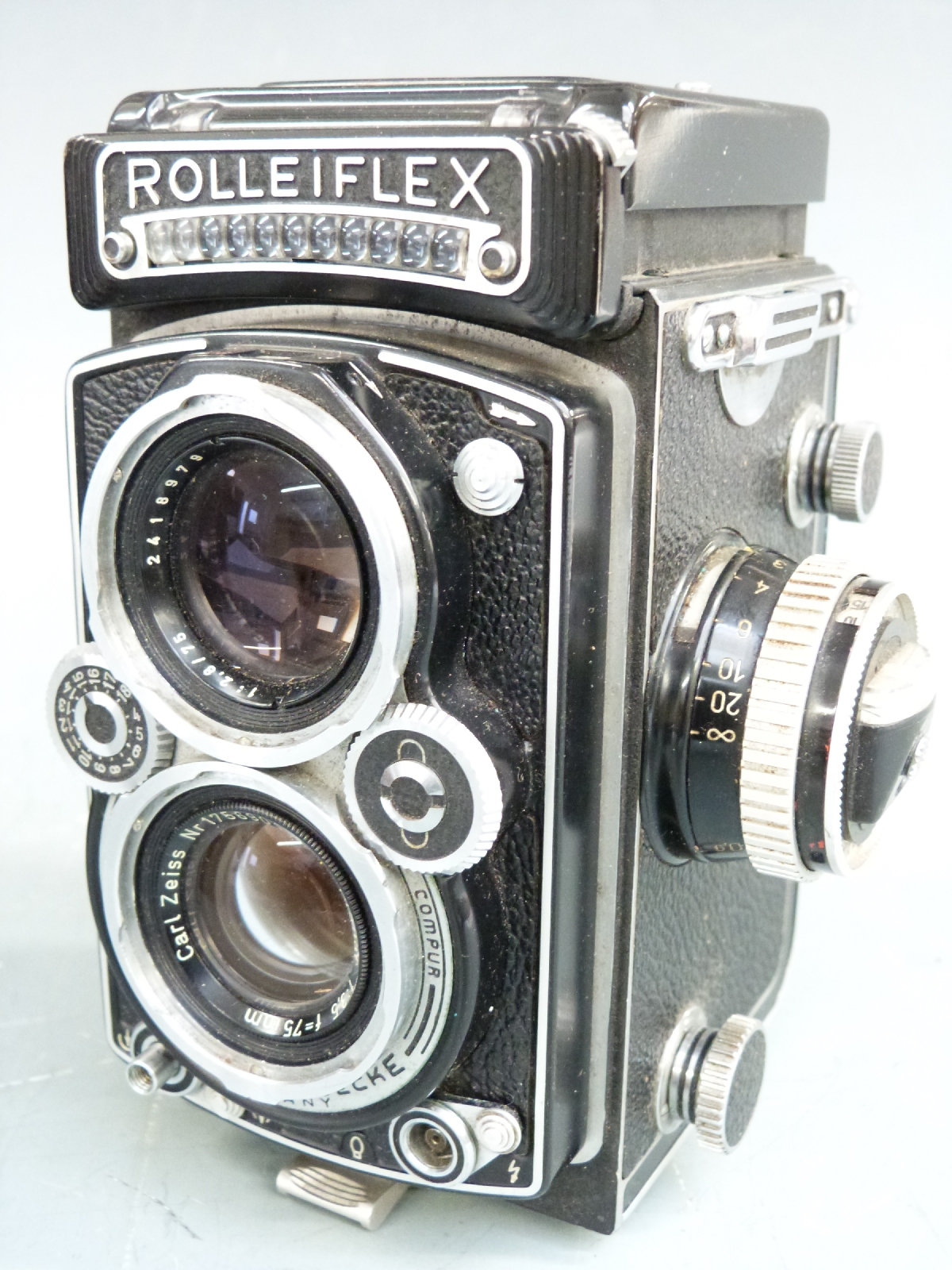


Here you look into the round window under the rectangular opening that enables you to see a part of the not totally covered ground glass via an auxiliary mirror that lets you adjust focus while you hold the camera at eye level. This solution for taking pictures of fast moving subjects you find on a lot of twin lens reflex cameras of the era, but with most of these Rolleiflex-copies you loose the ability to focus your picture because the ground glass is covered with the front wallr of the finder. By folding in the middle of the front part towards the ground glass it leaves an open frame you can look through at eye level when peering through a smaller rectangular cutout in the back part of the waist level finder. The waist level finder of the Rolleiflex has a dual functionality. The picture on the ground glass of the Rolleiflex (left) and the Rolleicord is not too bright. But that is about the only similarity between the two. Not a bad thing to have on a camera without an exposure meter.Įvaluating the finders of both cameras at first glance showxs the same results: Compared with the exceptionally bright ground glass of my 3.5F both cameras show a rather dim picture in their waist level finders.
#ROLLEICORD CAMERA SERIAL NUMBERS HOW TO#
Other similarities between the two cameras are the port for a flash cable, a 1/4 inch tripod socket and a table on the back of the cameras on which you can see how to set your exposure according to weather conditions, lighting situations and film speed. While my 3.5F sports the bigger Bajonett II, the Automat and the Rolleicord IIe share Bajonett I with its smaller diameter, so i can use my Rolleinar closeup-lenses i have bought over the years for my Automat also on the Rolleicord. You see them at the first glance: Both Rolleis are twin lens reflex cameras with a waist level finder, a leaf shutter and a nice bajonett surrounding both their lenses that can take accessories like filters, sunshades and other stuff. Between two birds of a feather that have a lot in common and are two very different beasts nevertheless. Okay, so may the contest begin between two Rollei-Sisters from the early fifties, the time of petticoats, rock ‘n’ roll and twin-lens reflex cameras. But luckily i own a second Rolleiflex, an Automat Model K4A from 1951 which timewise is much closer to the Rolleicord and has neither exposure meter nor a fresnel lens under the ground glass like the fancy 3.5F. Ten years more development and refinement are too much of a head start, even when dealing with timeless cameras from the stable of Franke and Heidecke that kept fathful to their basic construction for many decades. Rolleicord Vb Review at Thorley Photographics by Thorley Bros.There is a fundamental question, though, you have to answer before you embark on such a quest: Which Rolleiflex should you take to compare with a self-repaired Rolleicord IIe from the year 1950? It would be really unfair to let her run up to my Rolleiflex 3.5F, ten years younger and one of my all-time camera favorites.Rolleicord I f:4.5 (Art Deco) and Rolleicord V at.Rolleicord IIC, Rolleicord III, Rolleicard IV, Rolleicord V on by Sylvain Halgand (in French).Rolleicord Price & Model Identification Guide.Document reproduced in this Flickr album by Rebollo_fr. Leaflet presenting the Rolleicord, Perle, Semi Olympus II and Patent Etui, dated November 1938.

McKeown's Price Guide to Antique and Classic Cameras, 12th Edition, 2005-2006. Image by Valérie Loiret-Brunissen ( Image rights) Leaflet by the Japanese retailer Photo News, November 1938


 0 kommentar(er)
0 kommentar(er)
